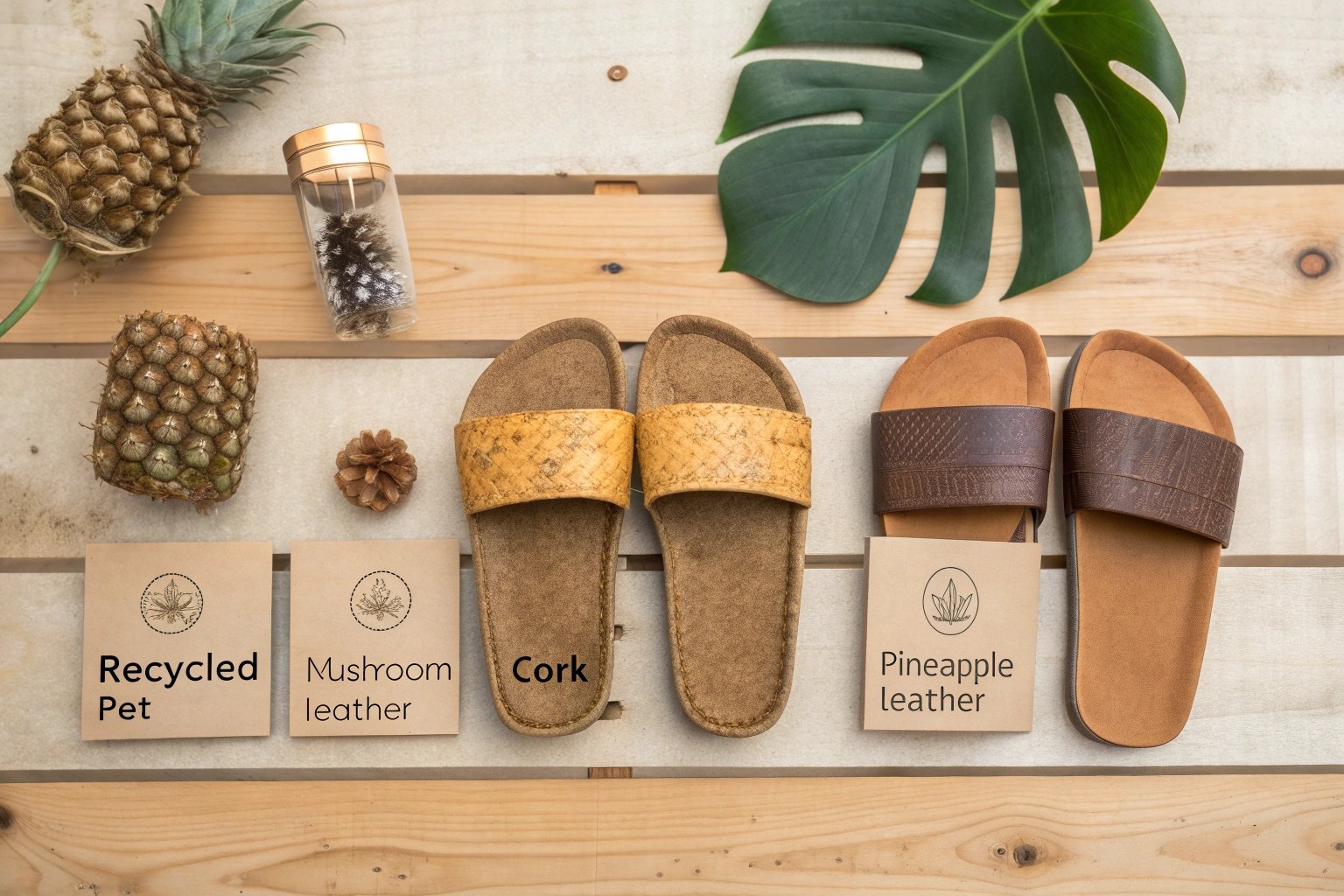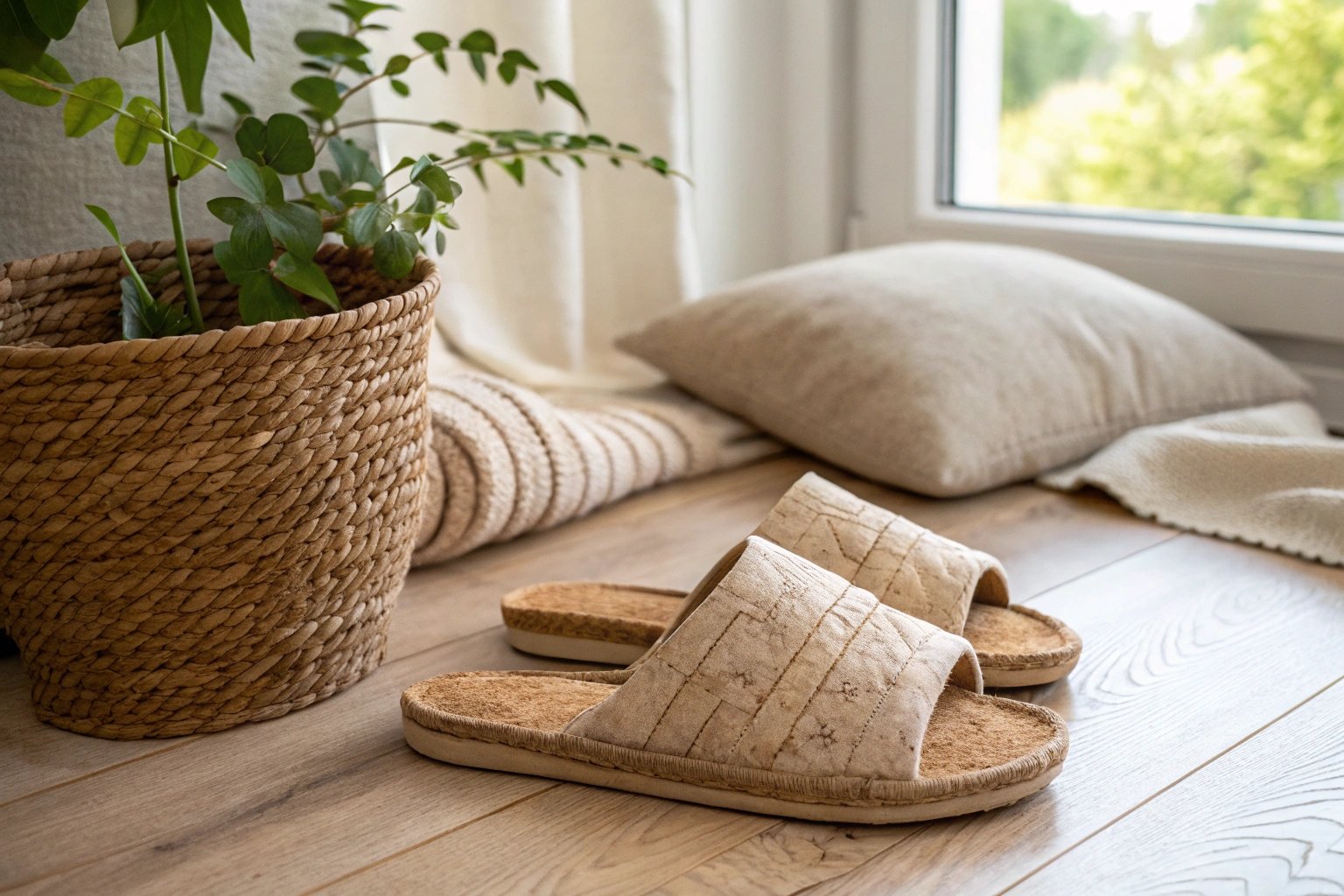Are you tired of animal leather? Do you want slippers that are good for the planet?
Many eco-friendly alternatives to animal leather can be used for slippers, including recycled materials, plant-based options, and innovative textiles. These materials reduce environmental impact and offer similar qualities to traditional leather.

So, if you want to make eco-friendly choices for your brand, keep reading. Let’s explore some great alternatives.
What is the eco-friendly alternative to leather?
Are you looking for eco-friendly materials that are similar to leather? What if you can find some options that are both environmentally friendly and good-looking?
Eco-friendly alternatives to leather include recycled materials like recycled PET, plant-based options like Piñatex (pineapple leaf fiber) and cork leather, and innovative materials like mushroom leather (Mylo). These offer a reduced environmental footprint compared to traditional leather.

Okay, now that we know the answer, let’s explore these eco-friendly alternatives in more detail, so that you can make a sustainable decision in your next slipper project.
Recycled Materials
Recycled materials are a great option. They reduce waste and use existing resources. For example, recycled PET (rPET) is made from plastic bottles. I use rPET in some of my slipper designs. It’s durable, lightweight, and reduces plastic waste.
Here is a comparison table of recycled materials for slippers:
| Material | Source | Benefits | Considerations |
|---|---|---|---|
| Recycled PET | Plastic bottles | Durable, lightweight, reduces plastic waste | Can still contribute to microplastics |
| Recycled Cotton | Textile scraps | Soft, breathable, reduces textile waste | May require more processing |
| Recycled Rubber | Used tires | Durable, water-resistant, reduces tire waste | Can be heavy |
When I started Ningbo Cotton Slipper Co., Ltd., I knew I wanted to prioritize sustainability. Using recycled materials was a key part of that plan. It aligns with my mission to deliver top-quality slippers while minimizing environmental impact.
Plant-Based Leathers
Plant-based leathers offer another eco-friendly alternative. Piñatex, made from pineapple leaf fiber, is a popular choice. Cork leather is made from the bark of cork trees. It’s sustainable because the bark regenerates. Mushroom leather, or Mylo, is another innovative option. It is made from mycelium, the root structure of mushrooms.
Here is a comparison table of plant-based leathers for slippers:
| Material | Source | Benefits | Considerations |
|---|---|---|---|
| Piñatex | Pineapple leaves | Sustainable, lightweight, durable | Limited water resistance |
| Cork Leather | Cork tree bark | Renewable, water-resistant, lightweight | Can be less flexible |
| Mushroom Leather | Mycelium | Sustainable, biodegradable, versatile | Still in early stages of development |
I remember when I first learned about Piñatex. I was amazed that pineapple leaves could be turned into a leather alternative. It perfectly fits our vision to help customers build branded slippers while being environmentally responsible.
Innovative Textiles
Innovative textiles are constantly emerging. These materials use new technologies to create eco-friendly alternatives. One example is lab-grown leather. It’s made from cultured cells and reduces the need for animal farming.
Here is a comparison table of innovative textiles for slippers:
| Material | Source | Benefits | Considerations |
|---|---|---|---|
| Lab-Grown Leather | Cultured cells | Reduces animal farming, customizable | High production costs |
| Bio-Based PU | Plant-based sources | Durable, versatile, lower carbon footprint | Not fully biodegradable |
My goal is to serve customers in over 100 countries. Offering innovative and sustainable options is essential to achieving that vision. We continuously explore new materials to provide the best solutions.
Conclusion
In conclusion, many eco-friendly alternatives to animal leather exist for slippers, offering a range of sustainable choices.

